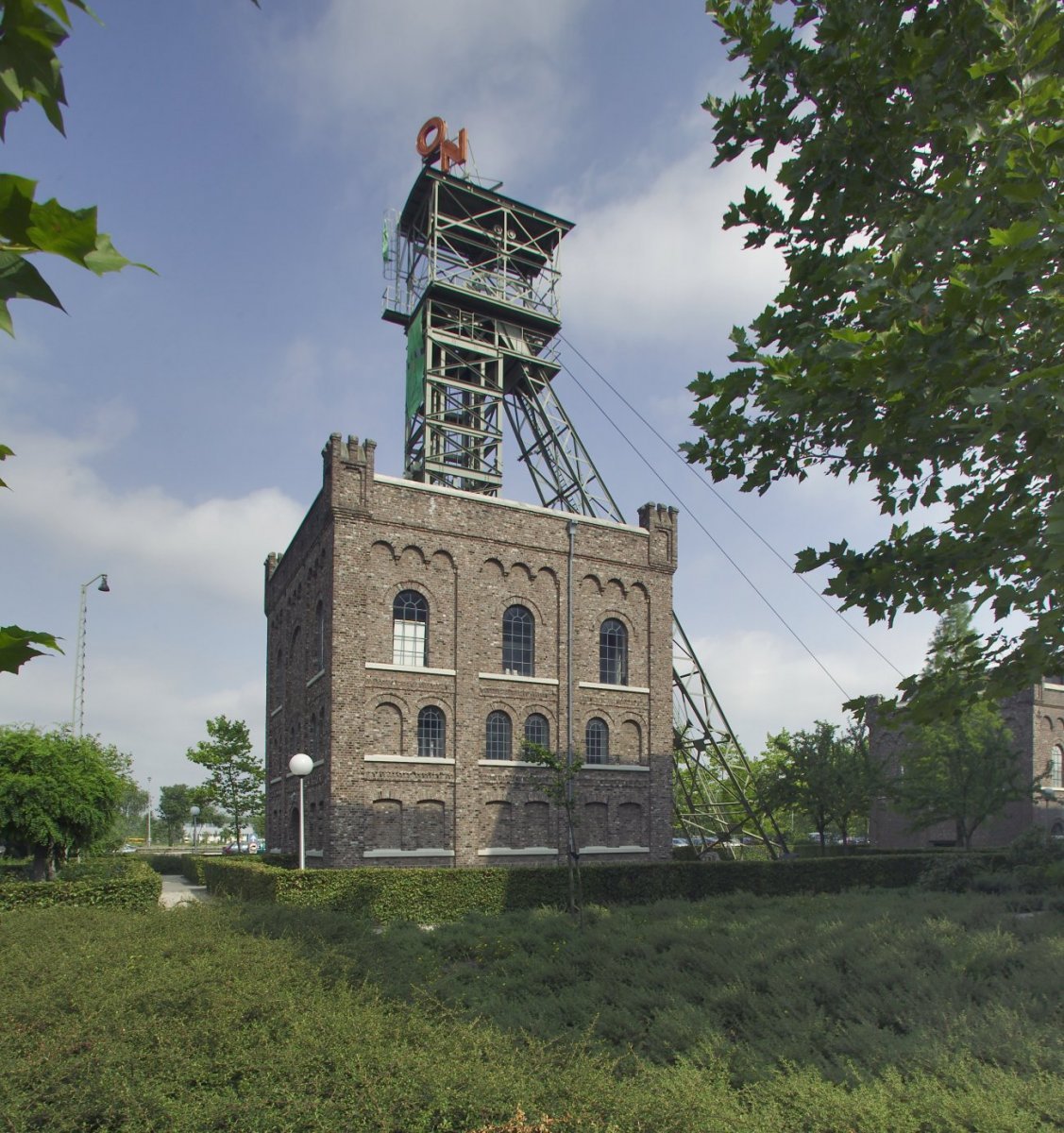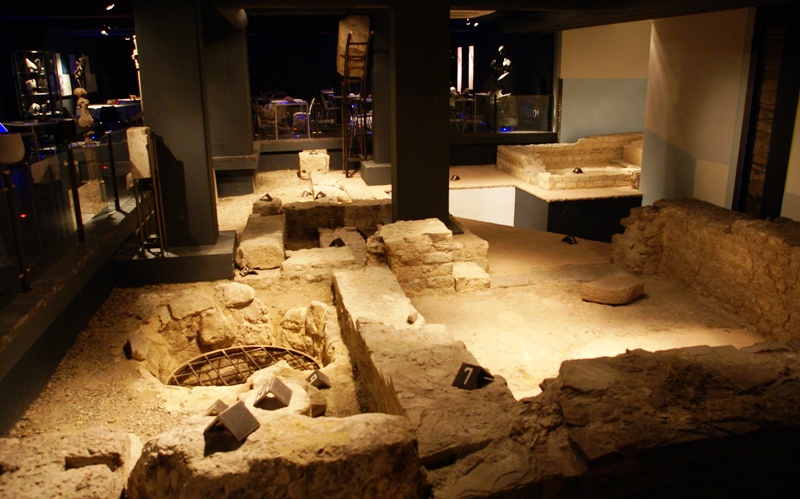|
Heerlen
Heerlen (; ) is a city and a Municipalities of the Netherlands, municipality in the southeast of the Netherlands. It is the third largest settlement proper in the province of Limburg (Netherlands), Limburg. Measured as municipality, it is the fourth municipality in the province of Limburg (Netherlands), Limburg. Heerlen forms part of the city-region of Parkstad Limburg, an agglomeration with about 250,000 inhabitants and encompassing 8 municipalities. It is to the east of Maastricht and north of the German city of Aachen. After its early Roman beginnings and a modest medieval period, Heerlen became a centre for the coal mining industry in the Netherlands in the late 19th century. In the 20th century, architect Frits Peutz played a major role in shaping the city as we know it today. His most famous design, and a distinctive building in the city centre, is the so-called Glaspaleis (''Glass Palace''), listed as one of the world's thousand most architecturally important buildings o ... [...More Info...] [...Related Items...] OR: [Wikipedia] [Google] [Baidu] |
Frits Peutz
F.P.J. Peutz (7 April 1896 – 24 October 1974) was a Dutch architect. Biography Peutz was born in a Catholic family in Uithuizen in Groningen, a mostly Protestant province in the north of the Netherlands. In 1910 he was sent to the Rolduc boarding school in Kerkrade in the Catholic province of Limburg for his higher education. In 1914 he graduated at the HBS, an old type of Dutch high school. After that he studied civil engineering in Delft. In 1916 he changed to architecture. In 1920, while still not graduated, he returned to Limburg to settle as an independent architect in the town of Heerlen, where the booming coal mining industry provided him with many assignments. Peutz played a major role in transforming Heerlen in a true, modern city. In 1925 he received his degree in architecture. Around 1926 his first son, Victor Peutz was born, who became audiologist and acoustician. Peutz and his wife Isabelle Tissen had thirteen children together. One of whom followed in his father' ... [...More Info...] [...Related Items...] OR: [Wikipedia] [Google] [Baidu] |
Glaspaleis
The Glaspaleis (in English: ''Glass Palace'') is a modernist building in Heerlen, Netherlands, built in 1935. Formerly a fashion house and department store, Schunck, it is now the cultural centre of the city. The original name was ''Modehuis Schunck'' (Schunck Fashion House), but it was soon nicknamed ''Glaspaleis'', which is now the official name. The architectural style is largely according to what is in the Netherlands known as ''het Nieuwe Bouwen'', which corresponds roughly to Modernism, Bauhaus and International style (architecture), International style. The visually most distinguishing aspect is the free-standing glass that covers three sides, which makes it even more transparent than the famous Bauhaus building in Dessau and is part of the natural climate control. *In 1995, it was declared a Rijksmonument, National Monument for the purpose of historic preservation *In 1999, it was put on the list of the ''1000 most important buildings of the 20th century'' by the Interna ... [...More Info...] [...Related Items...] OR: [Wikipedia] [Google] [Baidu] |
Limburg (Netherlands)
Limburg (; ), also known as Dutch Limburg, is the southernmost of the twelve provinces of the Netherlands. It is bordered by Gelderland to the north and by North Brabant to the west. Its long eastern boundary forms the border with the German state of North Rhine-Westphalia. To the west is the border with the Belgian province of Limburg, part of which is delineated by the river Meuse. To the south, Limburg is bordered by the Belgian province of Liège. The Vaalserberg is the extreme southeastern point, the tripoint of the Netherlands, Germany, and Belgium. Limburg had a population of about 1,128,000 in January 2023. Its main municipalities are the provincial capital Maastricht (population 120,837 as of January 2022), Venlo (population 102,176) in the northeast, as well as Sittard-Geleen (population 91,760, bordering both Belgium and Germany) and Heerlen (population 86,874) in the south. More than half of the population, approximately 650,000 people, live in the south of Limb ... [...More Info...] [...Related Items...] OR: [Wikipedia] [Google] [Baidu] |
List Of Mayors Of Heerlen
This is a list of mayors of Heerlen. *1805–1818: Jan Gerard Kemmerling (4 February 1776 – 15 January 1818) *1818–1820: Albert Schultze *1820–1843: Johan Willem Lintjens (?? – ??) *1843–1853: Jan Joseph Jaegers (17 May 1810, Heerlen – 31 October 1872, Heerlen) *1853–1855: Leonard Leopold Stassen (Schaesberg, 26 November 1806 – Heerlen, 20 October 1855) *1856–1862: Jan Peter de Hessele (12 February 1788 – 30 August 1869) *1869–1894: Mathias Jozef Savelberg (28 May 1825 – 4 August 1894) *1894–1913: M.J. de Hesselle (1855–1935) he also was the town's Pharmacist *1913–1926: Marius Alphonse Marie Waszink (18 May 1881, Maastricht – 23 October 1943, Breda), later became Minister of Education *1926–1961: Marcel van Grunsven (4 December 1896 – 24 July 1969) *1962–1964: Charles van Rooy (23 January 1912, Rotterdam – 1 August 1996, Hilversum) *1964–1976: Frans Gijzels (24 November 1911, Geleen – 23 April 1977, Heerlen) *1976–1986: Jan ... [...More Info...] [...Related Items...] OR: [Wikipedia] [Google] [Baidu] |
Hoensbroek
Hoensbroek () is a Dutch town in the municipality of Heerlen. It is situated in the southeast of Limburg (Netherlands), Limburg, a province in the southeast of the Netherlands. Until 1982, Hoensbroek was a separate municipality. Hoensbroek is known for its medieval castle, Hoensbroek Castle, Kasteel Hoensbroek, named after Knight Hoen, a member of the Hoen Family. It dates from around 1250. Hoensbroek is also known for the fair on Ascension of Jesus, Ascension Day (Ascension of Jesus, Hemelvaartsdag). The fair brings as many as 100,000 people to the town, every year. In medieval times, the town was known under the name of Gebrook, meaning as much as "Swampy Landscape", and belonged to the Family Hoen. Their family name eventually mingled with the original one, resulting in the name ''Hoensbroeck'' for the location and Van Hoensbroeck as the family name. The spoken dialect, Gerbrooker Plat, refers to the ancient name of Gebrook. Recent history Coal mining The town remained modest ... [...More Info...] [...Related Items...] OR: [Wikipedia] [Google] [Baidu] |
Aachen
Aachen is the List of cities in North Rhine-Westphalia by population, 13th-largest city in North Rhine-Westphalia and the List of cities in Germany by population, 27th-largest city of Germany, with around 261,000 inhabitants. Aachen is located at the northern foothills of the High Fens and the Eifel Mountains. It sits on the Wurm (Rur), Wurm River, a tributary of the Rur (river), Rur, and together with Mönchengladbach, it is the only larger German city in the drainage basin of the Meuse. It is the westernmost larger city in Germany, lying approximately west of Cologne and Bonn, directly bordering Belgium in the southwest, and the Netherlands in the northwest. The city lies in the Meuse–Rhine Euroregion and is the seat of the Aachen (district), district of Aachen ''(Städteregion Aachen)''. The once Celts, Celtic settlement was equipped with several in the course of colonization by Roman people, Roman pioneers settling at the warm Aachen thermal springs around the 1st cen ... [...More Info...] [...Related Items...] OR: [Wikipedia] [Google] [Baidu] |
Maastricht
Maastricht ( , , ; ; ; ) is a city and a Municipalities of the Netherlands, municipality in the southeastern Netherlands. It is the capital city, capital and largest city of the province of Limburg (Netherlands), Limburg. Maastricht is located on both sides of the Meuse (), at the point where the river is joined by the Jeker. Mount Saint Peter (''Sint-Pietersberg'') is largely situated within the city's municipal borders. Maastricht is adjacent to the border with Belgium and is part of the Meuse-Rhine Euroregion, an international metropolis with a population of about 3.9 million, which includes the nearby German and Belgian cities of Aachen, Liège, and Hasselt. Maastricht developed from a Roman Republic, Roman settlement (''Trajectum ad Mosam'') to a medieval river trade and religious centre. In the 16th century it became a garrison town and in the 19th century an early industrial centre. Today, the city is a thriving cultural and regional hub. It became well known through ... [...More Info...] [...Related Items...] OR: [Wikipedia] [Google] [Baidu] |
Municipalities Of The Netherlands
Since 1 January 2023, there have been 342 regular municipalities ( ; Grammatical number#Overview, sing. ) and three Caribbean Netherlands, special municipalities ( ) in the Netherlands. The latter is the status of three of the six island territories that make up the Dutch Caribbean. Municipalities are the second-level administrative division, or public body (Netherlands), public bodies (), in the Netherlands and are subdivisions of their respective provinces of the Netherlands, provinces. Their duties are delegated to them by the Cabinet of the Netherlands, central government and they are ruled by a municipal council (Netherlands), municipal council that is elected every four years. Municipal merger (politics), mergers have reduced the total number of municipalities by two-thirds since the first official boundaries were created in the mid 19th century. Municipalities themselves are informally subdivided into districts and neighbourhoods for administrative and statistical ... [...More Info...] [...Related Items...] OR: [Wikipedia] [Google] [Baidu] |
Parkstad Limburg
Parkstad Limburg (; Ripuarian language, Ripuarian and ) is a conurbation of seven municipalities of the Netherlands, municipalities in the southern part of the province of Limburg (Netherlands), Limburg in the Netherlands. Consisting of Heerlen, Kerkrade, Landgraaf, Brunssum, Simpelveld, Voerendaal and Beekdaelen, the municipalities work together to improve public services, transport, and housing on a regional level. This collaboration started in 1999. Within Parkstad, the city of Heerlen functions as the centre of economic and social activity, and to a lesser extent the cities of Kerkrade and Landgraaf function in the same regard as regional hubs. Land use The name Parkstad, Dutch for "Park City", is derived from the relative greenness of the towns, 94,17 km2 (53%) of its area used for non-urban purposes. However, only 10% of the area (roughly 17.8 km2) is forest and nature, 42% (roughly 74.96 km2) is used for agriculture. Previously, the area had been known as Oo ... [...More Info...] [...Related Items...] OR: [Wikipedia] [Google] [Baidu] |
Voerendaal
Voerendaal (; ) is a Municipalities of the Netherlands, municipality and a town in the southeastern Netherlands. Population centres ''Dutch topographic map of the municipality of Voerendaal, June 2015'' History The Romans left the ruins from a Roman villa rustica as a legacy. In 1049 pope Leo IX initiated the Catholic Church - Sint Laurentiuskerk. During medieval times many castles were built: Cortenbach, Haeren, Puth (Netherlands), Puth, Rivieren and Ter Worm Castle, Terworm. Also castles such as Hoenshuis and Overst Voerendaal. The area was mined for marl (mergel in Dutch) and coal mining, coal. Transportation Railway Station:Klimmen-Ransdaal railway station, Klimmen-Ransdaal, Voerendaal railway station, Voerendaal Notable people * Roel Brouwers (born 1981) a Dutch former footballer with 289 club caps, lived in Voerendaal while playing for Borussia Monchengladbach Gallery File:Voerendaal, de Sint-Laurentiuskerk RM37884 IMG 8265 2021-02-21 13.24.jpg, Church: Sint Lauren ... [...More Info...] [...Related Items...] OR: [Wikipedia] [Google] [Baidu] |
Thermae
In ancient Rome, (from Greek , "hot") and (from Greek ) were facilities for bathing. usually refers to the large Roman Empire, imperial public bath, bath complexes, while were smaller-scale facilities, public or private, that existed in great numbers throughout Rome. Most Roman cities had at least one – if not many – such buildings, which were centers not only for bathing, but socializing and reading as well. Bathhouses were also provided for wealthy private Roman villa, villas, domus, town houses, and castra, forts. They were supplied with water from an adjacent river or stream, or within cities by aqueduct (watercourse), aqueduct. The water would be heated by fire then channelled into the caldarium (hot bathing room). The design of baths is discussed by Vitruvius in ''De architectura'(V.10) Terminology '','' '','' '','' and may all be translated as 'bath' or 'baths', though Latin sources distinguish among these terms. or , derived from the Greek language, G ... [...More Info...] [...Related Items...] OR: [Wikipedia] [Google] [Baidu] |







